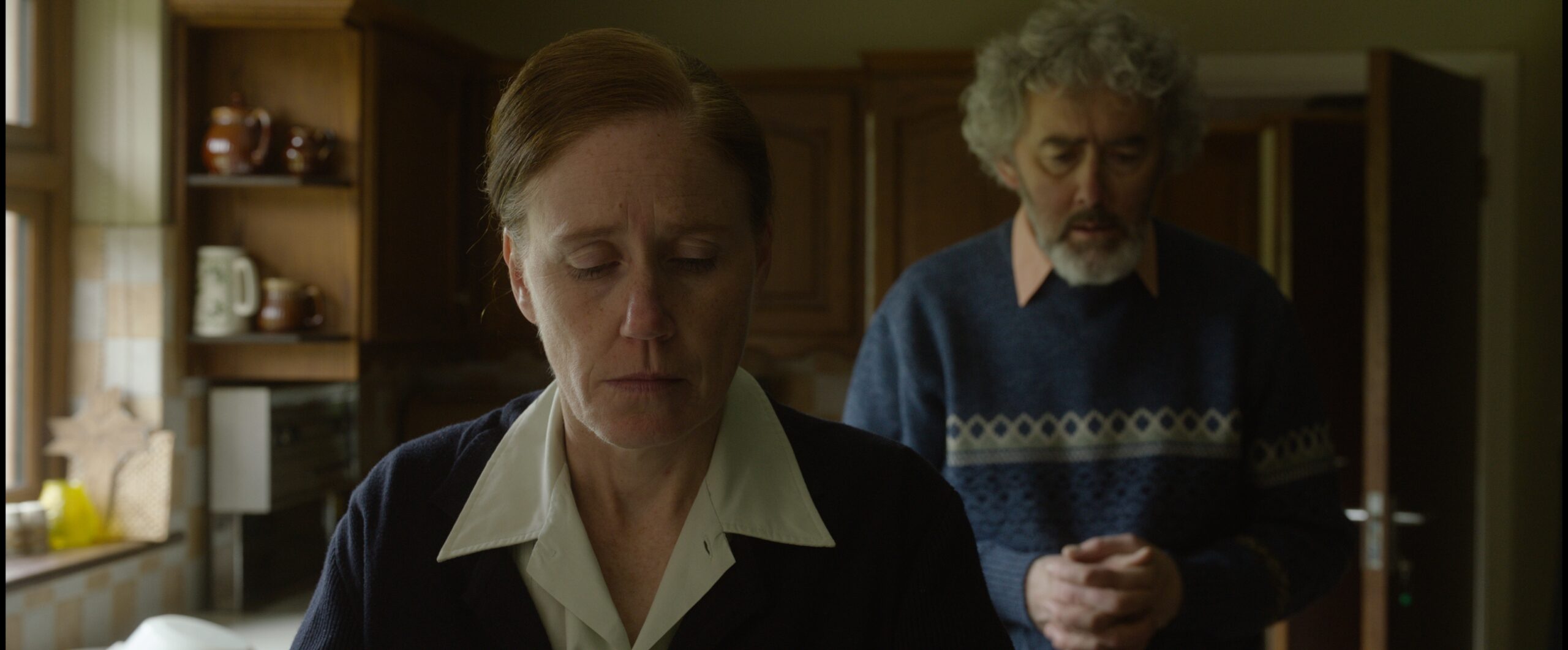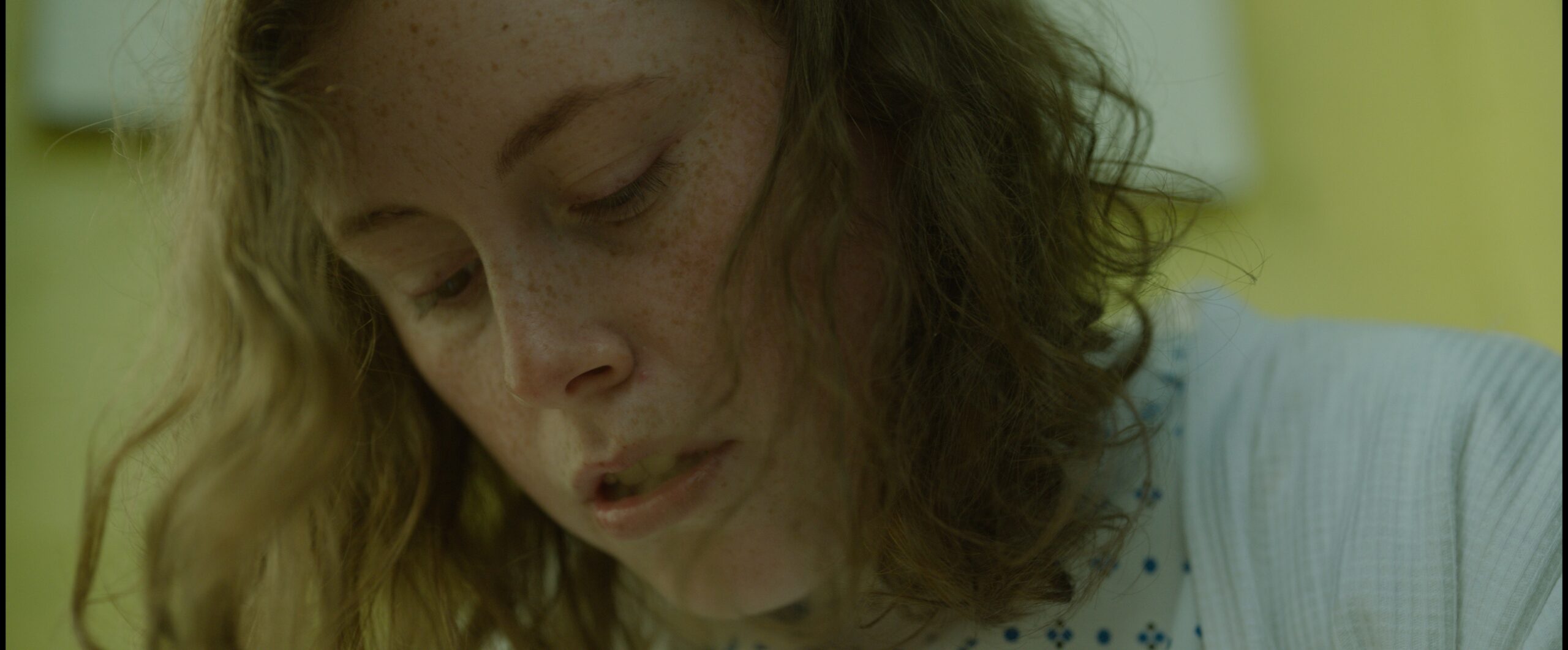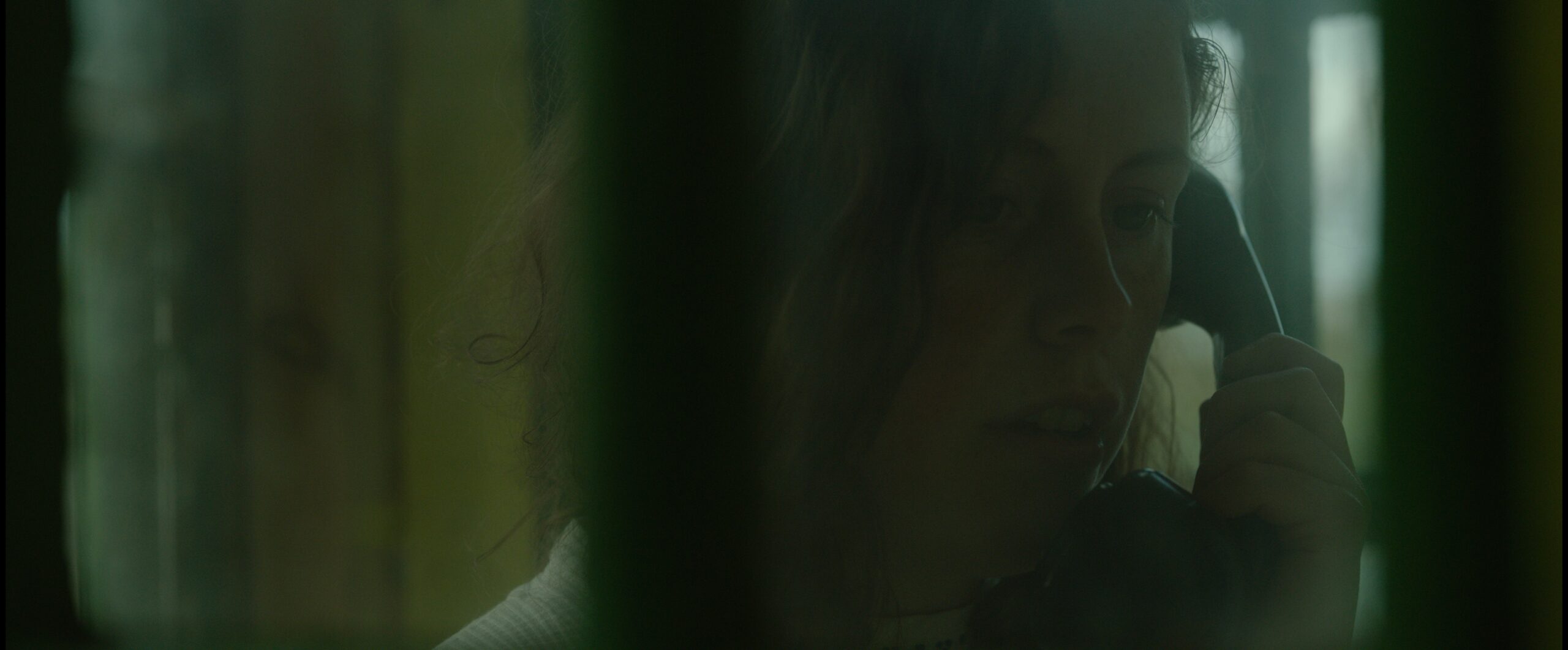A White Horse is a short film set in 1970’s Ireland. In just ten minutes, audiences are drawn into the tension of a family torn between tradition and their own longings. Bridget, a young woman, is in love with another woman. Her parents hospitalize her, clearly breaking their own hearts and family, believing it is the best thing to do. The film shows the horrors of conversion therapy (specifically electroshock therapy aka ECT), from psychological effects to familial rifts to deep personal dilemmas.
This film is particularly relevant now, as certain forms of conversion therapy continue to be used in the United States, the UK, and elsewhere around the world. Anyone who is considering any type of conversion therapy (whether for yourself or your child) would be well served to research the topic. A White Horse explores, through a fictional family, these multifaceted decisions. While most films on the topic may be off putting to religious parents with LGBTQ+ kids, I believe this one represents the plight of the parents more fully than may be expected. The parents are sympathetic characters, who love their daughter. Most parents, even without LBGTQ+ kids, find themselves caught between the pressure of society/community and their love for their child at some point in the raising process. Positioned in this moment in history, this film serves as a poignant reflection on where we have been, where we are now, and where we could be regarding allowing children to choose whom and how they love, in their own time, without needing to conform to traditional standards. It is a reflection on the layers of change that need to happen in order to move away from heartbreak. By capturing the harrowing experience of one family, A White Horse holds a mirror to us all, asking us to consider what we would do and why.

I had the pleasure of interviewing director Shaun O’Connor over the phone. Speaking with him from my home in Salt Lake City, Utah, I almost felt like I was having a pint at an Irish pub with him in Cork. Grab your beverage of choice and read on to eavesdrop on our conversation.
Before getting down to business, Shaun and I got acquainted by chatting about the bizarre state of the world, comparing pandemic lockdowns in our respective countries, and daydreaming about travel once this is all over. Eventually, we turned our attention to A White Horse.

Melissa Lyman: I enjoyed the film. It was so scary!
Shaun O'Connor: Oh, thank you. It [conversion therapy] is a very scary topic.
ML: Yes, yes it is. I was wondering, what inspired you to make this film?
SO: Writer Paul Cahill and I have been working on an idea for a TV miniseries on people being institutionalized in the 1970’s for things we now consider common, like homosexuality or anxiety. We’d been reading a book called Bird’s Nest Soup about her experiences being institutionalized for similar reasons to Bridget. It is difficult to prove you’re not crazy to an institution when your family won’t sign you out. We were also thinking about stories from the past, from friends and family about people here in Ireland who would disappear for a while. They would be sent away, and no one would know why. Then they would show up a year or two later, sometimes changed. Here in Ireland we have recently voted in gay marriage and women’s body autonomy. It amazes me that only 30 years ago we were doing this type of conversion therapy.
ML: [Here we broke into a discussion of religious attitudes and influences, how that has impacted laws and practices concerning LBGTQ+ rights in our respective lives and areas.] It’s only natural that religion comes up as we are talking about conversion therapy. It has played such a role in the whole thing.
SO: One of the main themes in the film is this idea that Bridget sees what her parents are doing as a betrayal, but they see it as what she needs, like if she had a broken leg. They are informed by dogma, but we didn’t want it to be a film about that; it’s a film about warped sense of parenting. They believe she has just gotten in with a bad crowd, and needs to be cured. They love her to bits, and want to do what’s best for her, and the doctors know what’s best. It’s heartbreaking.
ML: It really is. The saddest part of the film for me is when Bridget’s brother asks if she is coming home.
SO: Yes, that is very sad. Another part that makes me think of is Bridget operating on muscle memory. Her short term memory is not working because of the ECT; she just wandered off the hospital grounds and dialed her parents, asked how they are doing, just out of muscle memory. In her conversation with her mother we see some spark of the strength she used to have. When the father looks at the photos in her room we see that she is a creative person. Some of that comes out when she tells her mother she won’t go anywhere without her friend. The mother finds she has set a place at the table for her, again probably through muscle memory.
ML: What was the best part of making this film?
SO: Last year I directed a theatre show for the first time. It’s very different from directing in film. In film you don’t often have much time with the actors. In theatre you have more time to spend rehearsing. When we were filming A White Horse, I made sure we had enough time with the actors to rehearse again and again, to draw out their performances. Bridget and her mother never see each other in the film, but we rehearsed enough that even the subtle reactions come across.
ML: It worked. I can see how that could go badly; the emotion definitely came across.
SO: Oh good. That’s good to hear. I have no formal education in film, apart from a masters in film theory. So when I am on set I am always learning as I go, just winging it, hoping no one notices.
ML: I think we all are, winging it.
SO: Yes, we all are.
ML: [We had a good chuckle over that, and broke into a discussion of imposter syndrome and career changes, and the meandering paths life can take.] I think it’s important that you are making films about mental health issues. People feel so alone, and it is so helpful to see someone else has gone through what you are going through.
SO: Back in my 20’s, I had a terrible time with panic attacks and a symptom called depersonalization, which is very frightening to experience. It was so bad I had to take time away. I got through it with journaling, and now I have put that together into a book. People liked it, found it helpful, so now I have a downloadable manual and guided relaxation. I also do coaching sessions with people around the world who are going through those symptoms, even though I am not licensed; I make that clear, but I do have experience dealing with those specific things. I’ve made a couple of films about mental health, including A White Horse, and another short film about a man going through panic attacks.
ML: [Here we digress into commiserating about the stress of the last few years, worry about climate change and politics before returning to our main topic.] I was curious about the image of the white horse. Does it have any symbolism?
SO: Paul might correct me on this, but I think it is based on an anecdote from someone who went through ECT. They associated an image from the hospital room with that experience, I believe a painting of a horse, and just kept seeing it. I also believe, in ancient Judeo/Christian circles the white horse meant death, but I am not sure.
ML: I also wanted to ask you about Ballybunion. Is it a real place, and have you been there? [In the film Bridget reminisced about trips to the beach in Ballybunion.]
SO: Oh, yes, indeed. Ballybunion is a coastal village outside Kerry. It is beautiful, pretty touristy. Families from Cork or Kerry would go on holiday there. Back in my mid-twenties, when I was a full time musician, I played a lot of gigs there in Ballybunion. It is a gorgeous spot. For Bridget, it represents the past, before everything changed. She asks her mother to take her there. And you know when her mother promises to, and betrays her, it breaks her heart, but from her point of view she has to do it.
ML: [We waxed philosophical here, comparing stories from friends and loved ones who came out thirty years ago as opposed to young people today, who are usually supported at least by peers in exploring their gender and sexual identities. We both hope things will continue to progress this way.] How can people watch the film?
SO: At the moment, there is no way to watch it, because it is under consideration for Oscar nomination, and that’s the rules. But in the new year it will be available regardless of what happens with that. People can follow the film on facebook and twitter, and be notified when it comes out.

You can follow A White Horse on Facebook and Twitter and see more of Shaun’s work at his website shaunoconnor.com.